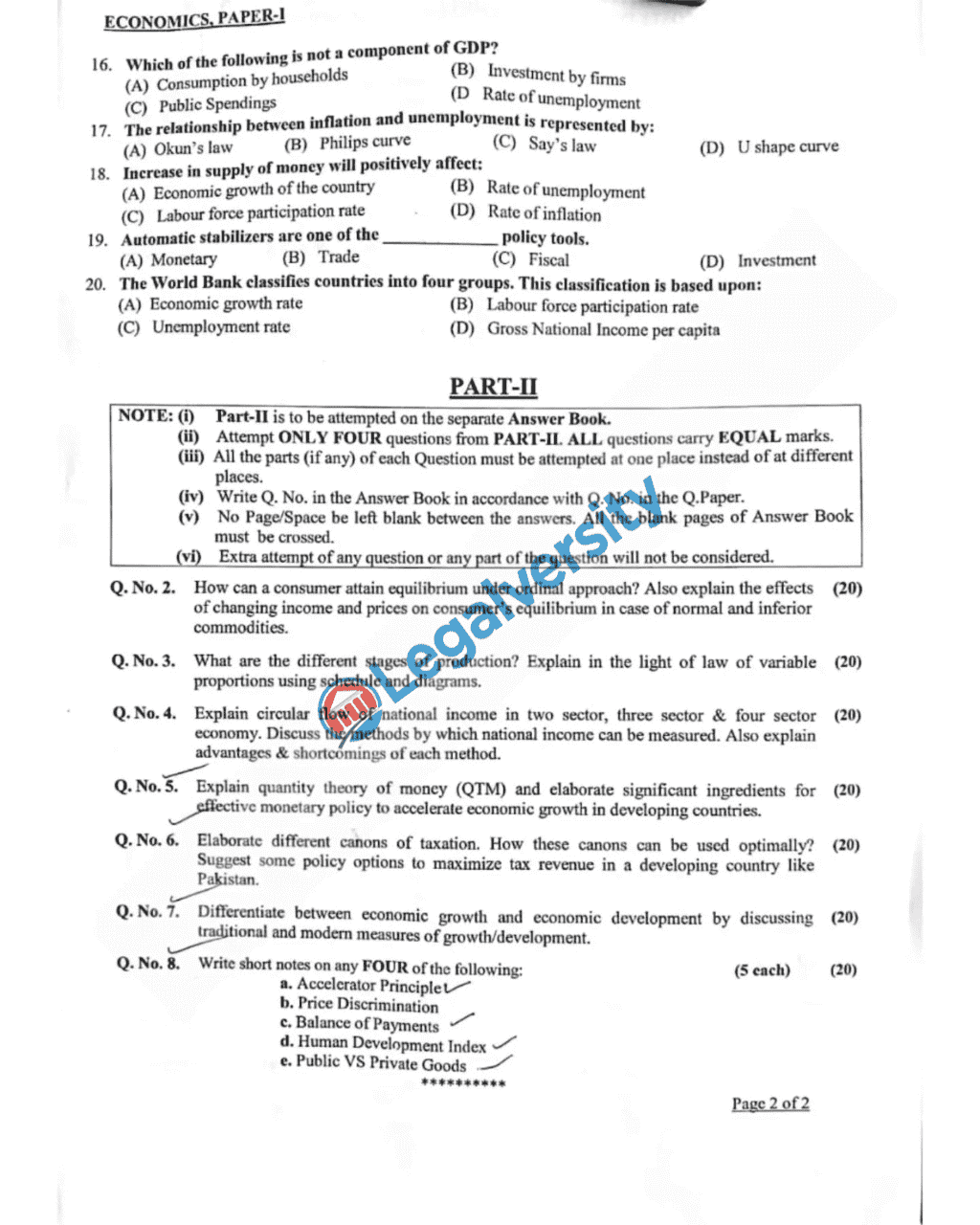Economics is an optional subject in the CSS competitive examination 2025. Here, you will find the CSS Economics past Paper-I 2025. I will also provide a summary of the paper, in which you will analyze what topics were given and how difficult they were. This lets you better understand the paper and prepare well for future examinations.
CSS Economics Past Paper-I 2025
Q1. How can a consumer attain equilibrium under an ordinal approach? Also, explain the effects of changing income and prices on consumer equilibrium in the case of normal and inferior commodities.
Q2. What are the different stages of production? Explain in the light of the law of variable proportions using schedule and diagrams.
Q3. Explain the circular flow of national income in two sectors, three sectors, and four sectors economy. Discuss the methods by which national income can be measured. Also, explain the advantages and shortcomings of each method.
Q4. Explain the quantity theory of money (QTM) and elaborate on significant ingredients for effective monetary policy to accelerate economic growth in developing countries.
Q5. Elaborate different canons of taxation. How these canons can be used optimally? Suggest some policy options to maximize tax revenue in a developing country like Pakistan.
Q6. Differentiate between economic growth and economic development by discussing traditional and modern measures of growth/development.
Q7. Write short notes on any four of the following:
- Accelerator Principle
- Price Discrimination
- Balance of Payments
- Human Development Index
- Public Vs Private Goods
Summary of the Paper
The Economics paper has a combination of microeconomic and macroeconomic principles that demand both theoretical knowledge and real-world application.
Consumer equilibrium in the ordinal technique is described through the indifference curve analysis such that a consumer achieves the highest satisfaction concerning their budget constraint. The impact of changes in income and price varies between normal and inferior goods; for normal goods, demand increases with an increase in income, while for inferior goods, demand goes down as income increases. Price also causes equilibrium to change along the indifference curve, affecting consumption levels.
The law of variable proportions describes the three phases of production—(1) increasing returns, (2) diminishing returns, and (3) negative returns—depending on input-output relationships. This theory describes how output reacts to variable inputs when fixed inputs are held constant. The schedule and graphs describe how efficiency changes depending on these phases.
Circular flow of national income varies in a two-sector (firms and households), three-sector (with government), and four-sector (with foreign trade) economy. National income is calculated using the income, output, and expenditure methods. All methods have strengths and weaknesses; for instance, the output method does not double count but has difficulties with unrecorded economic activities, while the expenditure method correctly records expenditure but is data-intensive.
Quantity theory of money (QTM) defines that money supply has a direct impact on price levels. For developing economies, monetary policy needs to emphasize inflation control, financial inclusion, and investment incentives. Stable monetary policy and regulated growth in money supply are vital in stimulating economic growth.
Taxation adheres to certain canons like equity, certainty, convenience, and efficiency. Developing nations like Pakistan can maximize tax revenue by widening the tax base, minimizing evasion, and adopting progressive taxation policies. Effective tax administration and digitalization can also increase compliance and collection.
Economic growth refers to an increase in a country’s output, measured by GDP, while economic development includes improvements in living standards, health, and education. Traditional measures like GDP focus on output, whereas modern measures like HDI and the Multidimensional Poverty Index provide a broader perspective on human welfare.
The short notes section includes key economic concepts. The accelerator principle describes how investment demand varies with changes in income levels. Price discrimination is when companies sell the same product at different prices to different consumers. The balance of payments accounts for a nation’s economic transactions with the rest of the world.
The Human Development Index (HDI) quantifies human well-being outside of economic considerations. Public goods are non-excludable and non-rivalrous, while private goods are excludable and rivalrous. Generally, the paper requires a good understanding of economic concepts, their implications in practice, and a critical assessment of policy actions, especially for developing economies.
View the CSS Economics Past Paper-I 2025


Also read:
